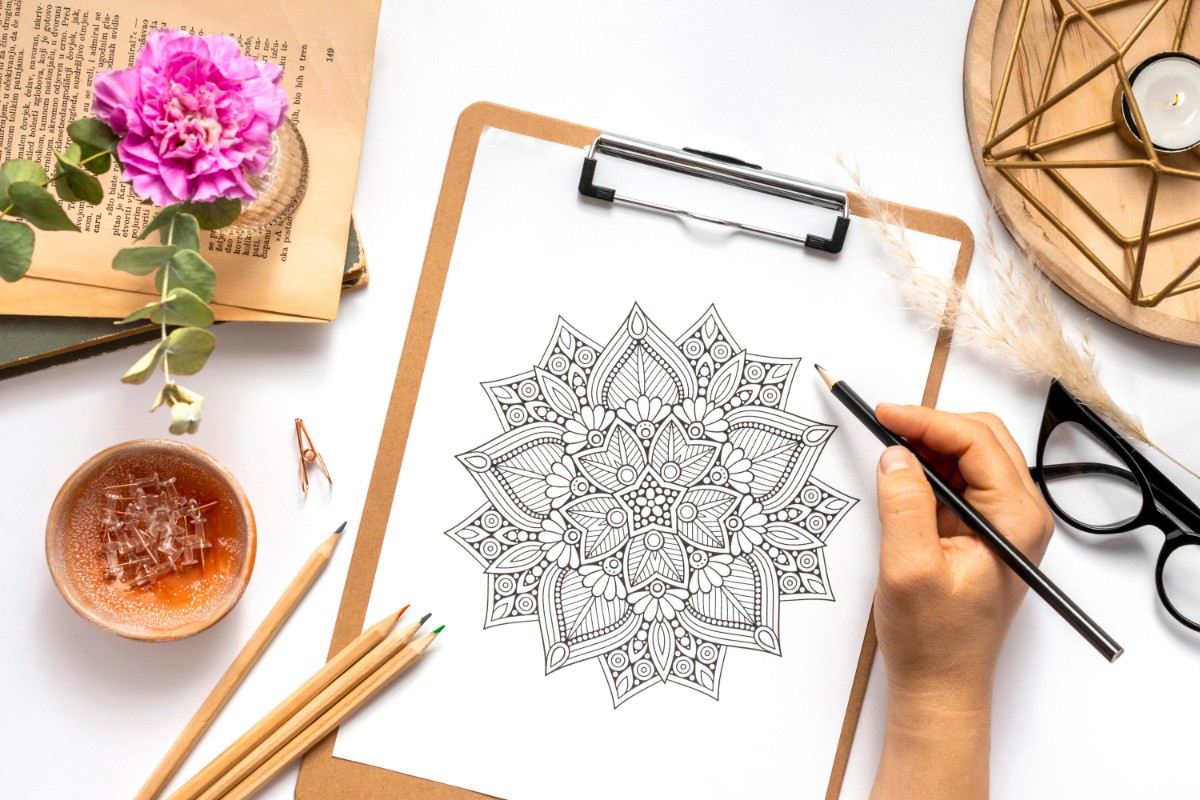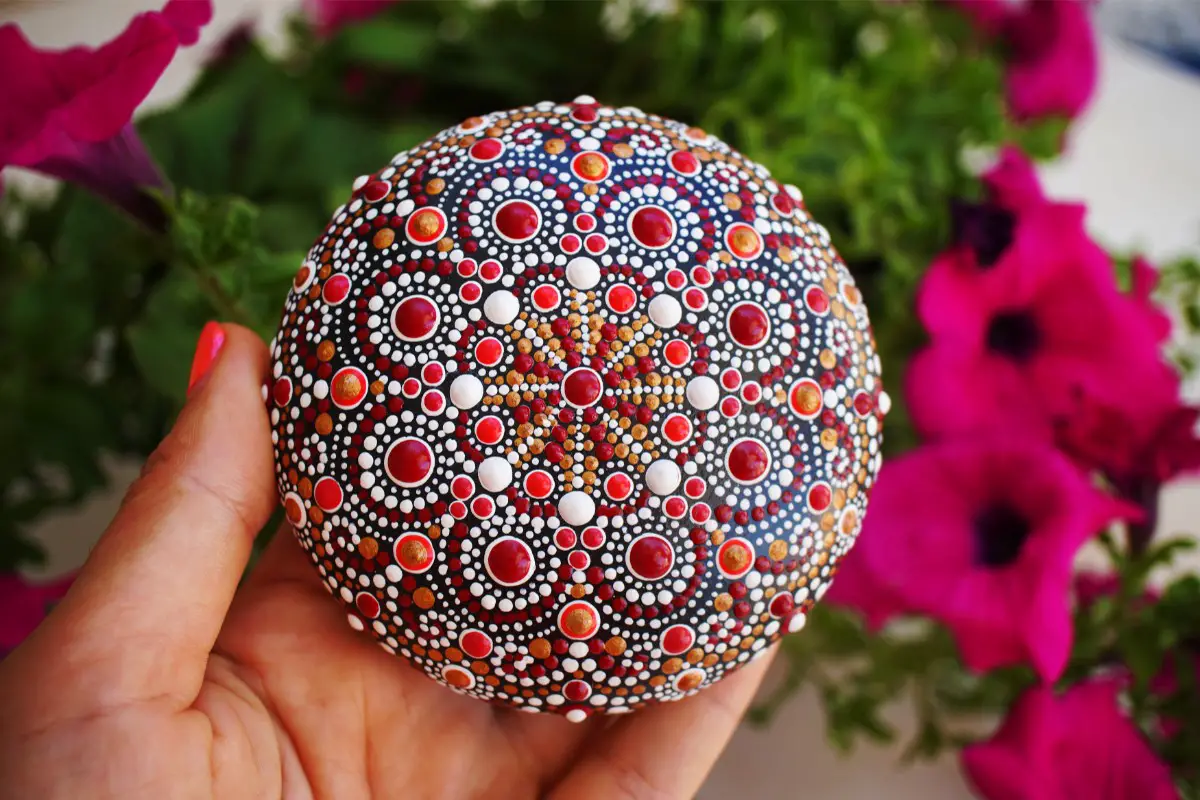Interested in purchasing, displaying, or using a mandala but not sure if it is a form of cultural appropriation? If so, this is the article for you. Discover the significance of the mandala and whether or not it is a form of cultural appropriation:
Is Displaying or Using Mandalas Cultural Appropriation?
This all depends on how the mandalas are being used – if you are using or displaying mandalas as a form of meditation, to improve focus, and to bring balance into your life, then it is not cultural appropriation – however, if the mandalas are being used for decoration, then it is disrespectful.
What is the Purpose of a Mandala?
A lot of people are confused about what mandala actually is. So much so that few individuals understand the purpose of a Mandala.
So, what is a mandala and how is it meant to be used?

The mandala is a symbolic diagram. It is meant to be a representation of the universe, a sacred space that functions as the receptacle for Gods as well as universal forces. Each person is meant to mentally enter the mandala and to work towards moving towards the center. In doing so, you experience disintegration and reintegration.
Mandalas are a part of Indian, Chinese, Tibetan, and Japanese cultures. There are two types of mandalas, each representing a certain aspect of the universe.
The garbha-dhatu is where the movement of the individual is from the one to the many. With the vajra-dhatu, the movement is from the many into the one.
In essence, the mandala is a spiritual and mental element of Buddhism. It is an object that is meant to help you focus, find your spiritual center, and to move to a higher plane of spirituality and existence.
The Origin of Your Mandala and How It Ties into Cultural Appropriation
Now, before going into whether or not different forms of mandala utilization is cultural appropriation or not, you must first consider whether your mandala is authentic.
If you have gotten your mandala anywhere outside of Asia, there is a good chance that the mandala doesn’t have the right pattern. In fact, it is largely a commercial or manufactured product. In that sense, it isn’t really a mandala.
Although Buddhism and mandalas have spread outside of Asia, these philosophies have often been twisted by the Western world. Most people in Western countries use it as an identity rather than to practice principles to move to a higher spiritual plane.
Not to mention, Buddhist elements such as the mandala have become heavily commercialized and manufactured in these countries. This is done with the little thought to the meaning or the origination of such symbols.
Therefore, using or keeping a ‘fake’ mandala certainly is a form of cultural appropriation as it shows a lack of the respect for the concept of the mandala.
Is a Mandala Tapestry Cultural Appropriation?
This depends on why you have the tapestry in your home and how you are using it. For instance, if you sit in front of the tapestry each day, clear your mind, and use the tapestry to find your spiritual center, this isn’t a form of cultural appropriation.
This is because you are using the tapestry as it was originally intended – to focus your mind and to improve yourself.
However, if you are keeping the tapestry as a piece of décor or to add an ethnic or boho vibe to your home, then this is a form of cultural appropriation. This is true regardless of whether or not the mandala is authentic.
Keep in mind, mandalas have real significance to people. By treating simply as a decoration, you are disrespecting the value that these individuals have placed on the mandala.
Are Mandala Tattoos a Form of Cultural Appropriation?
The one thing that you absolutely shouldn’t do is to get mandala tattoos. There are a few different reasons for this.
For one thing, you are treating the mandala as a decorative image and, as mentioned, you really shouldn’t do this. Despite the design looking pretty, a mandala is a spiritual image and isn’t meant to be used in any other fashion.

Therefore, when you get a mandala tattoo, you are completely disregarding the meaning and importance behind this design.
Furthermore, the mandala tattoo designs that you find aren’t actually mandala designs at all. Instead, they are geometric patterns that have a passing resemblance to the mandala.
This shows a lack of care to the authentic designs and what they mean – you are simply looking for something that will look good as a tattoo.
Finally, there is an increasing number of mandala tattoos these days. This proves that it is a passing fad for tattoos. In this instance, the mandala is turned into a trend and something gimmicky.
As a result, it is completely disrespectful to those who view the mandala as a sacred thing.
How to Avoid Cultural Appropriation with Mandalas?
First and foremost, do your research on mandalas. Discover what they are, what they mean, and how they are meant to be used.
This will guarantee that you are showing the mandala the due respect.
You should also be careful about where you get the mandala from. Avoid buying it from department stores or Western stores or brands.
Instead, look for mandalas originating from India, China, or Japan. These will be accurate and have greater meaning for you.
Are Mandalas Considered Cultural Appropriation?
If you purchase the proper mandala and use it to help improve your concentration and to move to a higher plane of thought and spirituality, then it isn’t a form of cultural appropriation – however, if it is used as decorative, a trend, or a gimmick then it is appropriation.
